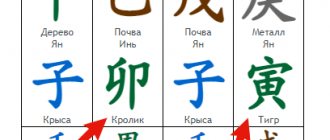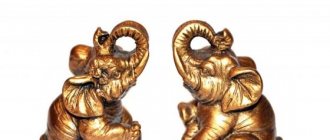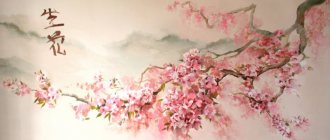Fluorography - the language of flowers
The language of flowers appeared in the East, in particular in Turkey. In this country there was a system that made it possible to reproduce a poetic line that spoke of feelings using one word. Plants were often used as keywords. The system was called selam. It became the basis for the emergence of the “language of flowers” in European culture, which was very popular at the end of the 19th century. Skills in such a language began to fade by the middle of the 19th century. In our country, a surge of interest in entertaining floral cryptography arose relatively recently - at the end of the 20th century. Therefore, it is worth returning to the original sources - the books that served as reference books on the language of flowers at the beginning of the 19th century.
Fluorography
Floral language, like any other, has changed over time and adapted to the conditions in which it was used - after all, each locality has its own favorite flowers. Sometimes the symbolism of the flower changed and did not coincide with its original eastern interpretation. For example, phlox had two interpretations - it could mean submission and consent, but at the same time it was a symbol of fiery passion.
Fluorography
Fluorography is a science that reveals the meaning and symbolism of various flowers and plants. Simply put, it is the language of flowers, with the help of which they express ideas, feelings, and moods.
During the Victorian era, the language of flowers was very helpful in cases where feelings could not be spoken openly, but required secret expression. Floral arrangements were created from fresh flowers (plants), wreaths, bouquets, and multi-colored objects or painted objects were used. Not only flowers were involved in the language, but also their arrangement, even the tilt of the flower mattered.
Fluorography
These flower dictionaries have come to us; they tell in detail about the meaning of many plants.
In Russia, the popularization of the language of flowers is associated with the name of the poet and translator Dmitry Petrovich Oznobishin, who published the Persian book “Selam, or the Language of Flowers” that he translated into Russian. This book described more than 400 plants, each of which had a specific word or phrase. The book was quite popular, of course, primarily among young people.
Fluorography
Nowadays, when giving a bouquet that carries such a message in the language of flowers, you risk remaining misunderstood. Perhaps you should include a short “flower phrase book” with your bouquet? You can include a book on the language of flowers with your gift so that your flower letter can be deciphered. Or simply complement your greeting card with an interpretation of some of the meanings of the language of flowers.
Azalea
Azalea is a symbol of femininity, fragility, meekness, restraint, devotion; but at the same time - passions and sadness. It is customary to give azalea before an unwanted separation. When presenting an azalea, you say “I hope you will wait for me,” “Take care of yourself for me,” “I believe you!” When a man gives this flower, he admits that you are the only one for him.
Acacia
Acacia - secret love, chastity, loneliness. Acacia is a flower of regret and recognition of one’s mistakes. The one who gives the acacia says: “You are the best thing that happened in my life,” “Why aren’t we together now?”, “Let’s start all over again!”
Alstroemeria
Alstroemeria - makes a gentle compliment to the one to whom the flower is given, saying: “You are so sweet!” or “You are lovely!”
Adonis (adonis)
Adonis (adonis) - denotes an enthusiastic attitude towards the one to whom the bouquet is given.
Anemones
Anemones - sincerity, hope; but also joy, emotionality. Translated from the language of flowers, a gift of anemones means: “Why not?”, “I feel very good with you,” “Let’s have a party?”
Anthurium
Anthurium - courage, originality, passion. Anthurium is considered a predominantly male flower. A bouquet or composition with anthuriums will be an unforgettable gift for a husband or colleague, friend or boss... You can also give anthuriums to an extravagant lady, a kind of “vampire woman,” if you want to tell her: “You are unlike anyone else, and this delights me.” .
Aster
Astra (white) - in “flower language” this means “I love you more than you love me!” It is a symbol of love and grace, as well as memories.
Pansies
Pansies - nowadays these flowers are rarely given as gifts, but in the language of flowers they mean fun and entertainment.
Basil
Basil - although it is a spice, it also has its own meaning: disgust, hatred. If for some reason you cannot tell a person you don’t like everything you think about him, give him basil.
Bouquet of dried flowers
A bouquet of dried (dried) flowers means rejected love.
cornflower
Cornflower - “I don’t dare express my feelings to you”; delicacy, grace, simplicity, as well as gaiety and loyalty. It is customary to give cornflowers to young girls as a sign of sympathy. Such a gift may mean an offer of friendship or a desire to renew an interrupted acquaintance. The giver of cornflowers should not be suspected of immodest desires. For some reason, blondes most often like cornflowers.
Water lily
Water lily (water lily) - to pick such a flower, you will have to remain wet, but confidently declare your eloquence, sincerity and persuasiveness. And also say “Feelings are raging in my soul.”
Gardenia
Gardenia - secret love, “You are beautiful.” If you were given a gardenia, you should know that you are sincerely admired. Most likely, your admirer is very timid and considers himself unworthy of you.
Carnation
Carnation means charm, passion, fidelity, female love, honor. It is also worth noting that the color of a carnation carries different meanings. For example, if they wanted to say “I won’t be with you,” they gave a striped carnation.
Hibicus
Hibiscus - in the language of flowers it means long and eternal love.
Dahlia
Dahlia is a whim, inconstancy, a passing hobby. The person giving dahlias says: “I really like you, but I don’t promise anything,” “I’m not ready for a serious relationship,” “Why complicate everything?”
Gerbera
Gerbera - mystery, smile, flirtation, optimism. The person giving gerberas expresses his sympathy for you and hints that you will have a lot of fun together. Gerbera is a universal positive gift: for friends, lovers, colleagues... Feel free to choose these flowers if you want to share your excellent mood with someone or give a compliment.
Gypsophila
Gypsophila - caution, timidity. However, in a mixed bouquet, gypsophila, as a rule, is a kind of accessory, serves to give volume to the flower work and does not carry a semantic load.
Hydrangea
Hortensia - “Remember Me”; modesty, sincerity, hope. Many peoples believe that hydrangea has the ability to ward off illness and misfortune.
Gladiolus
Gladiolus - “I am truly sincere”, “Fear nothing”, flower of gladiators. The giver of gladioli is a strong, reliable person who does not accept compromises.
Gloxinia
Gloxinia - I don’t know what kind of flower this is, but I liked the meaning - it means love at first sight.
Delphinium
Delphinium - modesty, unpretentiousness; "I'm ready to be your shadow", "Call me"
Jasmine
Jasmine - sensuality, femininity, elegance and attractiveness. In India, jasmine is called “moonlight in love.”
Honeysuckle
Honeysuckle means affection, true love, dreams of a happy future. According to another interpretation, in the language of flowers, honeysuckle can symbolize generosity and generosity.
Iris
Iris - “I value your friendship very much” and symbolizes hope, trust, faith.
Calla
Calla - in the language of flowers, balance. Now this language has become more advanced due to the expansion of the plant’s color range. Burgundy and pink callas are a sign of admiration and recognition, classic white callas are a symbol of meekness, golden yellow callas speak of restraint and devotion; Purple calla lilies in a bouquet are an image of greatness, but at the same time - passion and sadness. “You are magnificent,” says the man with such a bouquet to the woman to whom he presents it. And at the same time, many consider callas to be a male flower. Maybe this is due to the shape of the flower and its strict appearance. However, the leaf shape of this plant is heart-shaped. You can say that calla leaves are filled with warmth from the heart. The inflorescence of this flower is, as it were, wrapped in a long beautiful leaf, which gives callas such an elegant and recognizable appearance.
Camellia
Camellia - admiration, perfection, gratitude. "You are an unearthly being."
Bell
White bell - humility, submission, constancy; “I will always be with you,” “Why do you torment me with whims?”
Blue bell – Constancy.
Crocus
Crocus - means affection, fun, joy. But in the language of flowers, when giving a purple crocus, you can ask, “Do you regret that you fell in love with me?”, When giving a yellow crocus, you can ask, “Are your feelings true?”
Cactus
Cactus - symbolizes perseverance or constancy. It may hint at the giver's fruitless attempts to achieve reciprocity.
Clover
Clover is considered a symbol of happiness; the one who gives it wishes happiness to the one who received the bouquet, or hints to him that he makes him happy.
Lavender
Lavender - admiration, loneliness. “I will never forget you”, “No one will replace you.”
Laurel
Laurel - Triumph, eternity, glory.
Lily of the valley
Lily of the valley - In Ancient Germany they were a symbol of reciprocity; lilies of the valley were considered a guarantee of love and happiness in family life. What could be simpler and at the same time more beautiful than lily of the valley? A few white, porcelain-like bells on a long stem and a pair of light green leaves - that’s all; and yet how beautiful it is, how elegant! And how beautiful it is in a bouquet surrounded by a border of its leaves! In Germany and France, they still celebrate the lily of the valley festival every year on the first Sunday in May and organize dances. Girls attach a bouquet of lilies of the valley to the bodice of their dress, and guys attach it to the buttonhole of their coat. When a guy invites a girl to dance, the girl exchanges bouquets with him as a sign of agreement. In the past, a bouquet of lilies of the valley had a deeper meaning: it expressed the consent of young people to get married, and this evening usually ended with the announcement of who was marrying whom.
Levkoy (Matthiola)
Levkoy (Matthiola) - Unfading beauty.
Lily
Lily is a symbol of tenderness, fidelity and cloudless happiness. The magical aroma of these flowers improves your mood and gives you a feeling of celebration. A bouquet or arrangement of lilies is a wonderful gift for an affectionate, romantic girl. Lily is one of the undisputed favorites of the flower world. This flower has an inimitable delicate aroma, which since ancient times has been identified with the aroma of tenderness and love.
Lily (orange ) - curiosity, coquetry. “You are a mystery to me,” “Is your heart free?”
Lily (white) - purity, purity, majesty, nobility. “It’s divine to be next to you!!!”
Lily (tiger) - pride, abundance, prosperity, well-being, arrogance.
Palm leaves
Palm leaves - if you decide to decorate the bouquet with these leaves, you will wish them success and good luck.
Lotus
Lotus - means health and happiness.
Magnolia
Magnolia - nobility, perseverance, perseverance, “You will still be with me,” “I am your destiny.”
Poppy
Poppy - speaking in the language of flowers, it will mean dreaminess, youth, imagination. A poppy picked in the field says “I’m dreaming of you,” a poppy in the garden says “Let’s love each other while there is time.”
Mallow
Malva - means a request for leniency, the hope of being noticed or forgiven.
Mimosa
Mimosa - hiding their feelings, speaking the language of love, they announced: “I am hiding my feelings.”
Daisy
Daisy - means true love, purity, innocence.
Narcissus
Narcissus - contrary to legend, in the language of flowers, narcissus means attention, chivalry. The yellow flower said “You are the only one”, “When I am with you, the sun always shines.”
Forget-me-not
Forget-me-not - with this flower you can express fidelity, true love, and talk about your memories.
Nivyanyk
Nivyanik - personifies the innocence with which the donor asks not to remain indifferent to his feelings.
Marigolds (calendula)
Marigolds (calendula) - report anxiety, uncertainty, jealousy.
Dandelion
Dandelion - it is unlikely that a man will choose this flower for a bouquet, but even if he takes a risk, it will hint that he is happy and faithful.
Orchid
An orchid is a luxurious flower and means beauty and love. And it is also considered a Chinese symbol of childhood. It is customary to give orchids only to loved ones.
Fern
Fern - in the language of flowers, means magic, charm, grace, mystery, enchantment, as well as the secret shackles of love.
Peony
Peony - in the language of flowers, means a cheerful life, a happy wedding and, in contrast, compassion.
Pelargonium
Pelargonium - promises support, consolation or a request to be close.
Snowdrop
Snowdrop - when giving the first spring flower, say “You are not like everyone else,” and it also means tenderness and hope.
Sunflower
Sunflower - this sunny flower is the main symbol of optimism, fun and prosperity. In the language of flowers, a bouquet of sunflowers given to a girl means: “You are a miracle!”, “I have never met someone like you,” “I am proud that you are with me.” Sunflowers are the sunniest flowers. A bouquet or composition of sunflowers is a bright, original and unforgettable gift. It is recommended to give sunflowers to creative and extraordinary people. Opt for a bouquet of sunflowers if your goal is to improve your mood, apologize or make a positive impression.
Rose
Rose - oh, how many of them have already been given! It turns out that there is a difference in what form you give it: a bud means an innocent heart; lethargic - you did not make an impression; dried - “Better death than living without happiness.” Color also plays a role: red speaks of love, dark red - mourning.
Rose (red) - love, passion. “I love you”, “I can’t live without you”, “You should be mine.”
Rose (bud, red) - “I think I’ve fallen in love with you,” “I’m glad we met,” “Every day my feelings for you are getting stronger.”
Rose Grand Prix - respect, generosity, love, trust, “You deserve the best.” Rose Grand Prix expresses the most noble feelings.
Rose (white) - purity and innocence, modesty and tenderness, mystery. “I will get you”, “You are an angel”.
Rose (yellow) - happiness, joy. "You are my sun". A flower that expresses the most positive emotions. According to the language of flowers, yellow roses have nothing to do with betrayal and jealousy (although this interpretation of their symbolic meaning is very common).
Rose (cream) - elegance, harmony, perfection, constancy. "I remember. Always!”, “You and I are the perfect couple”, “You are beyond praise!”
Rose (pink) - the highest happiness, “Trust me.”
Chamomile
Chamomile - many girls like this simple flower; it is believed that where a star falls, a chamomile blooms. And its name comes from the Latin word “romana”, which means “Roman”. Daisies are cute and simple flowers, warm and familiar. The color scheme of these flowers is yellow-white, yellow-green; these colors mean cheerfulness and happiness. Chamomile is a symbol of sweet simplicity and tenderness, a symbol of fidelity and a symbol of Russian nature. A bouquet of daisy flowers, so similar to wild ones, will be a wonderful gift for any event.
Lilac
Lilac - if white, it will mean first love, purple - “My heart belongs to you.”
Strelizia
Strelitzia - victory, masculinity, originality, determination. Strelitzia is considered the flower of strong, brave and successful people.
Tulip
Tulip is a symbol of spring and eternal youth. According to floral etiquette, it is one of the most sophisticated and, at the same time, universal gifts. You can give tulips to both women and men of any age and social status. Nowadays, tulips and tulip bouquets are considered the most popular and versatile floral gift. They are the main symbol of hope, youth and spring. In Turkey, the tulip is the main symbol of love and eroticism. Turkish women are sure that a bouquet of tulips in their hands or a decoration with a picture of a tulip attracts the attention of the chosen one, lights his heart with love and fills him with the desire to urgently leave the ranks of bachelors. In the language of flowers, a yellow tulip means “Your smile is like sunlight,” a red one means “Trust me,” and a variegated one means “Beautiful eyes.”
Violet
Violet means modesty, innocence, dignity. The white one says “Let’s take a risk?!”, the blue one says “Careful!”.
Freesia
Freesia - trust.
Phlox
Phlox - “Let's burn our letters!”, parting; but also reciprocity, unity, sweet dreams.
Chrysanthemum
Chrysanthemum - yellow means fragile or rejected love, white means truth, red means good luck and best wishes.
Rose hip
Rosehip - in the language of flowers means spring and poetry.
Cyclamen
Cyclamen - resignation, “Goodbye”, “How tired I am of you...”
It is believed that the number of flowers in a bouquet has a certain meaning: one flower is a sign of attention, three is a sign of respect, five is recognition, seven is love...
The most important thing to be guided by when choosing flowers is, of course, the tastes of the person for whom you are choosing a bouquet. How to recognize them? Give flowers more often, and sooner or later, you will definitely hit the mark!
You might be interested in:
Symbiosis of trees with animals and insects
Kohlrabi - cabbage turnip, tasty and healthy
Flower pot with smartphone charger
Books on floriculture and garden art (UK)
Cozy family garden
Antiquity
We can say that in Ancient Rome and Hellas this flower was revered most of all; it is from there that several legends about its origin come from. According to one legend, Venus cried for a long time after the death of Adonis; nothing could calm her down. And every tear of hers turned into a poppy. It’s sad, of course, but the red poppy is a symbol of what else? According to another legend, the poppy was created by the god of sleep Hypnos in order to calm Demeter, whose daughter was kidnapped by Hades. Hypnos gave her a decoction of this flower to drink, and she was comforted. Even today, her statues are decorated with these scarlet flowers. At the same time, the poppy was also a symbol of fertility due to the good germination of seeds.
Daisy
The daisy is one of the most common and well-known wild flowers. The name in English, daisy, is a corruption of the phrase day's eye, that is, “eye of the day”: the flower opens at dawn, and the underside of the petals is painted a soft pink color, as if reflecting the color of the sky at dawn. Shelley called the daisy a constellation flower that never sets. A comparison of daisies, scattered in abundance in the grass, with constellations appears in many other writers and poets.
In the language of flowers of the 19th century, the daisy signified innocence. According to writer Robert Tyas, it is a child's flower. Daisies are plentiful and easy to find, and the name often appears in nursery rhymes and games. Children wove wreaths from daisy flowers by splitting the stem of one flower with their fingernails and pulling the stem of another into the resulting hole. This simple watercolor captures the humble beauty of the daisy surprisingly accurately.
Latin name: Bellis perennis.
Meanings: beauty, fun, faith; I will never tell; innocence, fidelity, purity, simplicity.
Habitat: lawns, meadows, dune hollows, river banks.
Colors: Each petal, white with a pink tip, is an individual flower. The heart of a daisy is actually made up of many tiny yellow flowers.
The English word daisy comes from the expression "eye of the day", reflecting the way a flower opens to the sun and closes towards the night.
Daisy is a common diminutive version of the name Margaret: in French, the subspecies of the daisy is called marguerite.
Tattoo with a scarlet flower
Everyone knows that flowers depicted on the body are of great importance. What does the red poppy mean in this case? A tattoo with this flower has always been associated with death or sleep. And these two concepts are too close to each other, for example, lethargic sleep often duplicates the state of death, it is so difficult to distinguish them. This is all very strange, and people have been thinking about solving the mystery for decades.
Another meaning of such a pattern on the body is truth, devotion, fidelity. When deciding to decorate your body with poppy seeds, think about whether it’s worth it. No matter what meaning you put into the drawing yourself, there will always be some secrets and meanings unknown to us.
Scarlet flower today
And today the red poppy is a symbol of what? For example, to this day this flower is the emblem of the British Legion. Every year in the fall, artificial flowers are sold as a reminder of those who died in armed conflicts and two world wars. In Ukraine, for example, poppy is associated with fertility and endless open spaces. Petals were sprinkled on wedding loaves so that the newlyweds would have health and many children. Also in this country, the red poppy is a symbol of Victory; they have recently decided to use it at all official events.
Poppies as a feng shui talisman
As a rule, painted poppies are used as a talisman for the home. First of all, it's very beautiful. Take a look at modern modular paintings, or photo wallpapers with poppies.
Secondly, it is the most durable compared to live poppies in a vase. At least because they do not like a lot of water and sunlight is vital for them. But this option is also possible.
You should also remember that according to Feng Shui, poppies should only be used in the house live or drawn, but not dried.
All kinds of herbariums are a taboo (!) in Feng Shui, as they carry the energy of death.
Red poppy - a symbol of what in the Middle Ages?
In its bloodthirsty and gloomy traditions, Christianity declared the poppy to be a sign that the Last Judgment would soon come. The flower, according to the beliefs of that time, recalled the terrible suffering of Christ, and was also a symbol of indifference and ignorance. On the day when the Descent of the Holy Spirit took place, churches were decorated with poppies, and children carried flowers and scattered petals during the procession. Next came the priest with the holy gifts. In the 16th century, a treatise by the physician Theodorus Jacobus appeared warning that the seeds of the flower and its other parts should not be consumed excessively.
Snowdrops
Snowdrops have been a favorite flower in English gardens since Elizabethan times. As they are one of the few species that bloom in winter, it is hardly surprising that snowdrops have come to represent hope. For some authors, for example Robert Tyas, they also mean consolation: with their appearance, snowdrops promise that spring will come, comforting and delighting us at the end of winter. Indeed, in French the snowdrop is called perce-neige, “piercing snow.”
Latin name: Galantus nivalis.
Meanings: friend in adversity; comfort and hope.
Habitat: forest.
Colours: white and green.
The mysterious magical plant "moth" in Homer's Odyssey, used as an antidote to the potion of the sorceress Circe, may have been the snowdrop. This plant actually contains the substance galangamine, which is used to treat Alzheimer's disease and helps improve memory.
According to legend, when Adam and Eve were expelled from the warm paradise straight into winter, an angel turned some snow flakes into snowdrops to give people hope that spring would eventually come.
The Latin name Galanthus means "milk flower".
The English word snowdrop has the same root as eardrop (an obsolete word for earlobe).
Polls say
Currently, the favorite color of Europeans is blue (40 percent of residents prefer it). The “rating” of green is 17 percent, red is 12 percent, yellow is 6 percent, orange is 5 percent. The remaining percentages come from shades of these colors, as well as white and gray.
Like long echoes that mix in the distance and there merge into a dark, deep unity, spacious as night and like light - like long echoes, fragrances, colors, and sounds answer one another. Charles Baudelaire
Sunflower meaning
Sunflowers, in my opinion, are a symbol of joy, happiness, positivity, and longevity. This little sun is in our hands, this cute flower has positive energy and carries only positive emotions. The history of the origin of sunflowers goes back to ancient times, to North America, where Indian tribes began to grow them. And Peter 1 brought sunflower seeds to Russia.
The sunflower always turns towards the sunlight, despite the location of the luminary, hence its name, and one of the meanings is expectation and faith in the future. Subsequently, breeders developed a decorative sunflower flower, which is sold in flower shops and is often used in bouquets.
The bright yellow color represents friendship and hope; it seems to say: you warm me, thereby expressing gratitude. The Latin name for the flower comes from the Greek words sun and flower. What does folk wisdom say about this flower?
A bouquet of sunflowers personifies friendship, gratitude and, by giving it, they wish well-being and happiness in the family. In addition, by placing sunflowers at home, you will thereby clear the space of negativity, and by planting these sunny flowers in the garden or in front of the windows, you will protect yourself and your home from losses, failures and unkind people.
It would be appropriate to give a sunflower to a friend to lift his spirits, to an elderly person with wishes for longevity, etc.











